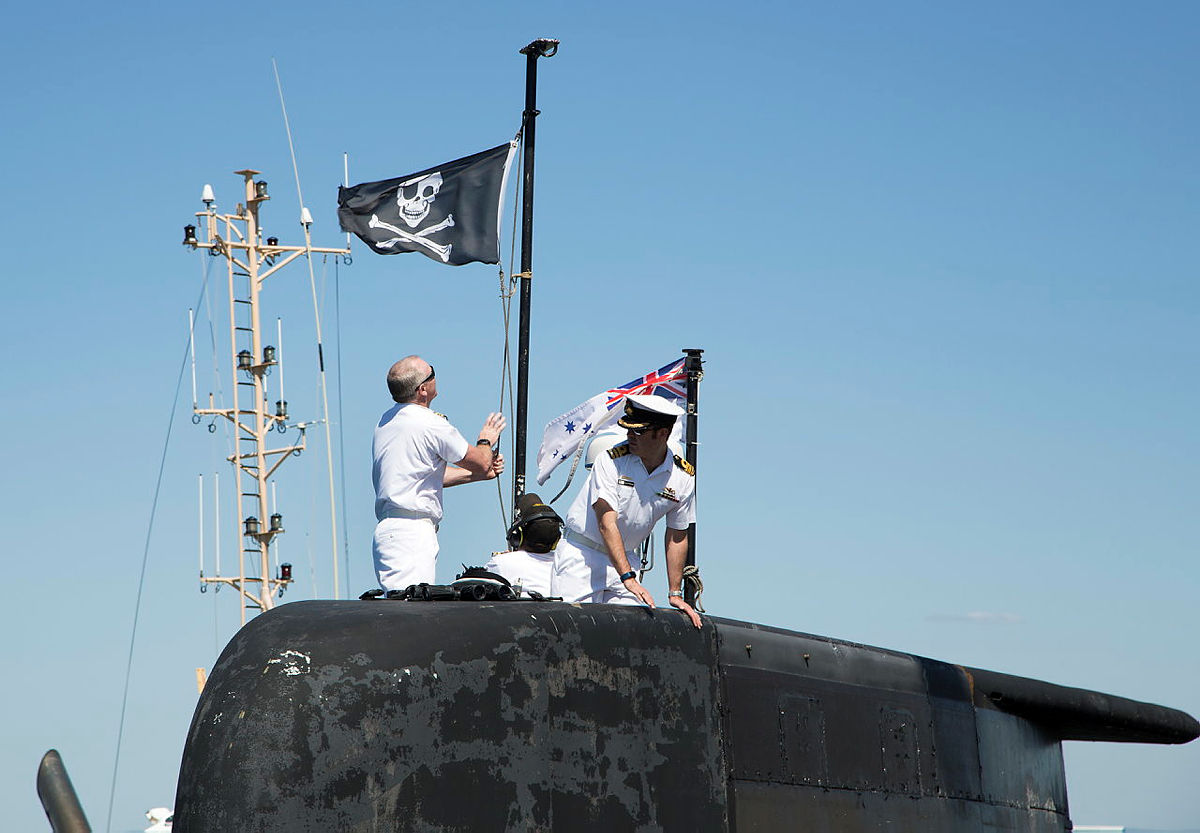
Submarines are a top-of-the-budget answer to a top-of-the-pile nightmare.
The argument for subs lies within the fundamental call on any nation: defend the realm and protect the currency (proving the oldest-profession status of strategists and economists in the state-building game).
Subs touch both bits of the realm–currency injunction: new boats to defend the borders cost a cornucopia ($89.7 billion is the current Attack-class price tag).
While economists reside in gloom, strategists dwell in horrors: dream up the worst possible scenario and then defend against it. Strategy wonks speak of low-probability, high-impact events.
To argue from first principles, submarines are what you have for the ultimate military nightmare—hostile forces coming to harm your territory. It has only happened once in the history of this Commonwealth, a high-impact moment that consumed all else. The 1942 experience is the existential fright that haunts Oz strategy.
Submarines have other uses, yet Australian voters are happy to simplify by embracing the first-principles thought: subs stop a foe from stepping foot on the nation that has its own continent. Date that view from the first decade of federation.
The subs saga began life with Prime Minister Alfred Deakin’s statement on defence in October 1907. Acting on advice from the Admiralty in London—but contrary to Australia’s naval experts—Deakin announced that his government had decided ‘the submarine is probably the best weapon’ for defence of our harbours.
In what became a familiar Oz problem, the future submarine fleet hadn’t been ordered when Deakin ended his second term as PM, in November 1908. Submarines can torpedo the most decisive of cabinets, leaving them divided and far from port. The saga is well into its second century.
Subs always ask Australia how much it wants to spend on insurance. You can make the argument that nearly $100 billion is a lot for one form of indemnity. Or that there are cheaper ways to get what we need.
The cheaper/other ways line comes up against lots of institutional resistance. Not least the military replacement syndrome. You always replace what you’ve got with more of the same, just a better version. The navy loves what it knows and knows what it loves, and always wants to go to sea in ships and boats.
Here at The Strategist, submarines are the gift that keeps on giving. As Andrew Davies noted a while back, we’ve covered the arguments for big submarines, little submarines, conventional submarines, nuclear submarines and no submarines, and the claim that we’ve chosen a preposterous submarine.
I’ve been writing about subs and Canberra since well before the Collins class was a gleam in Kim Beazley’s eye. And while geography doesn’t change, the way strategists think about what we might face in the sea–air gap has certainly evolved.
Once, the nightmare was Indonesia. In the same way we had F-111 fighter bombers so we could bomb Jakarta, we got subs to stop Jakarta coming to us. Australia signed up the F-111s in 1963, the same year the navy ordered the Oberon-class boats. The Cold War was the context, but Indonesia was the danger.
Indonesia, as always, looms with the inevitability of geography. It’s still the case, as Paul Dibb put it, that ‘the archipelago to our north is the area from or through which a military threat to Australia could most easily be posed’. That’s an argument for embracing and knowing and loving the archipelago, not just building submarines.
President Joko Widodo was stating aspiration as well as noting geography with his Canberra speech in February: ‘Australia is Indonesia’s closest friend.’
When we got the Oberon class and then built the Collins last century, China was a wisp of smoke on our strategic horizon, and the insurance was against Indonesia. Slowly we have shifted to the possibility of Indonesia as friend and shield, not threat. Intentions can change, but this century Australia has warmed to the idea that the nightmare will come through, not from, the archipelago.
By 2009, when Prime Minister Kevin Rudd embraced a dozen new subs, it was all about China. And China keeps looming larger. In the 2020 strategic update (as in the 2009, 2013 and 2016 white papers), China supplants Indonesia to take second spot in the hierarchy of countries most mentioned.
The strategic update is relatively blunt, as a policy statement, in talking about what Australia fears. Goodness knows what the secret version is like, given the darkness of the public document.
In the canons of Defence, it’s huge that we are scrapping the 50-year-old doctrine that we’d have 10 years’ warning of a state preparing to invade/harm/attack Oz. No longer do we have the comfort that it’d take a potential adversary 10 years to prepare and mobilise for a war that’d reach us. A fundamental change of Defence theology speaks of a mighty disturbance in heaven.
Scott Morrison shares elements of the submarine saga with Alfred Deakin: time available tangles with threat possibilities, seeking answers about the technology and the terrain. Complexity battles with cost.
Canberra is seized by the worry that it hasn’t got enough insurance. Our policy payments mount, but the coverage we want from the Attack class will arrive closer to 2040 than 2030. The new submarine is vital yet vexed, a wicked problem for Australia in what loom as wicked days.

